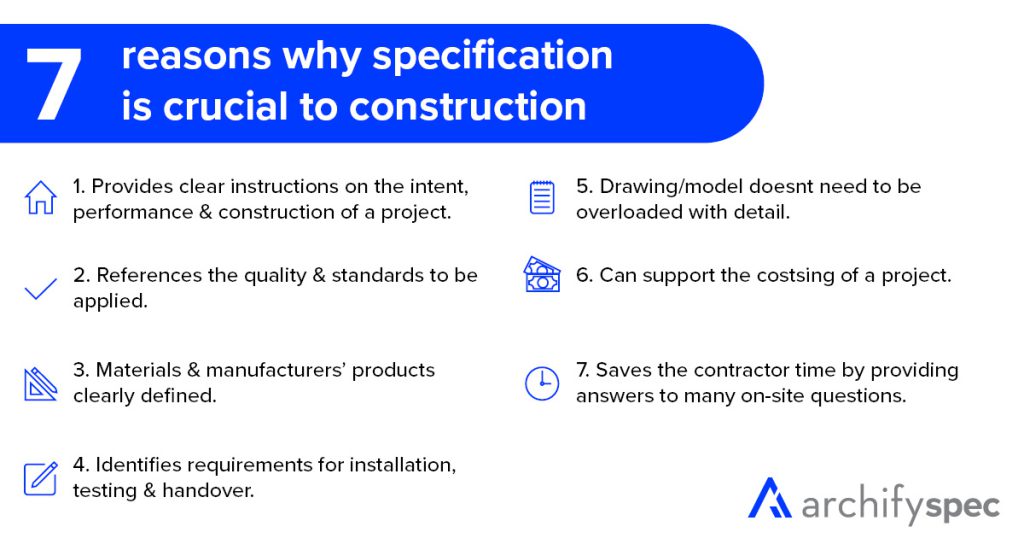Specification documentation is the backbone of digital projects and as the building industry undergoes a digital revolution, it is more important than ever to create quality and accurate specifications.
As the world of construction evolves, adapts to the BIM environment, and embraces the challenges of becoming a digital industry, specification remains a critical part of the construction process.
In Australia, new legislation such as the Design and Building Practitioners Act in NSW is accelerating this change and increasing the requirements on architects and specifiers when providing project documentation. The Victorian Digital Asset Strategy is another milestone for digitalisation in the sector.
Read on to learn more about specifications, and why architects and designers should adopt a digital master specification system today.
What is a specification?
A specification is the document that describes, in words, what cannot be visualised or explained on a drawing or in a model. In construction, the specification can cover everything from the performance criteria of the asset, the quality of the systems and products, which standards are applicable and how they should be executed, to even the products which are to be used.
The type of specification can relate to the project or the procurement route, whether it is performance-based, prescriptive or proprietary, all of which are dependent on the project requirements.
Specifications are required during the design stage, are part of the contract documentation, and play a key role in project fulfilment. As-built specifications will increasingly become an important part of the handover documentation at the end of the construction stage.
“Specification: A detailed description of the dimensions, construction, workmanship, materials etc., of work done or to be done, prepared by an architect, engineer etc.”
Shorter Oxford English Dictionary
Why is specification so important?

When should you write a specification?
Traditionally, specifications were one of the last items written before a package was issued for tender. However, with the advent of BIM, specification writing is occurring earlier in a project lifecycle.
Early-stage specification forms part of the review with the client about what they are looking to achieve on the project. It provides an understanding of the performance requirements of the whole project, so that when discussions develop on complexes, entities, space, locations, elements, systems and products, these form part of the build-up of a specification.
In essence, specifications are about data communication, and the exchange of information between the client, the designer and the contractor.
As the data requirements on projects become more complex and we strive for more collaboration, it is crucial that everyone has the same basis of project requirements, making specification essential.
Looking to improve your specification writing? Check out our 7 C’s of Specification.
Digital specification with ArchifySpec
There are a number of considerations when developing a specification, such as time efficiencies, knowledge sharing, quality of information and risk mitigation.
Using a word processor to prepare specifications can be time consuming and frustrating for everyone involved in the design and construction of a building.
As we move towards an industry increasingly adopting digital technologies, introducing a digital master specification system can improve efficiencies, collaboration and help to mitigate risks.
ArchifySpec is a collaborative platform that helps to manage and structure the content of your specification. It supports multiple disciplines working on a single data set, including authoring to the databases for architects, engineers, consultants, designers and specifiers together with contractors and manufacturers.
This dynamic functionality enables a significantly improved environment for the production of fit for purpose design documentation and accurate as-installed data records being returned to the asset owner.
You can read more about the benefits of using a master specification system over Microsoft Word here.



